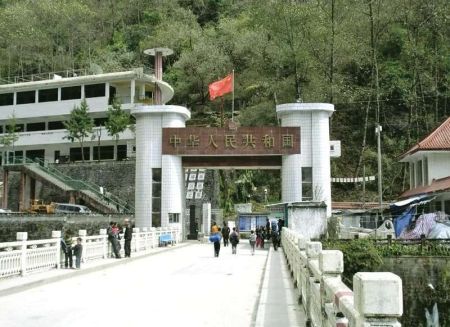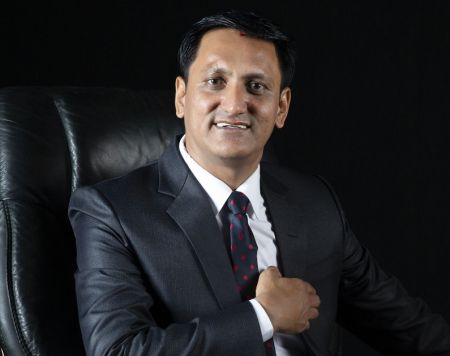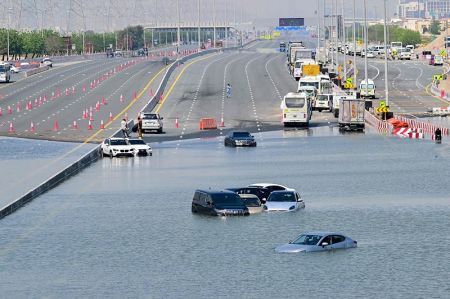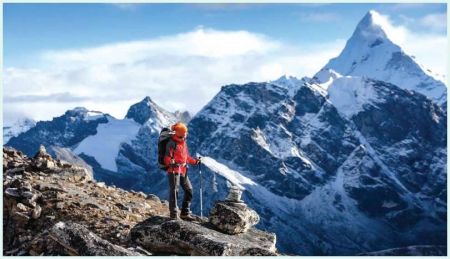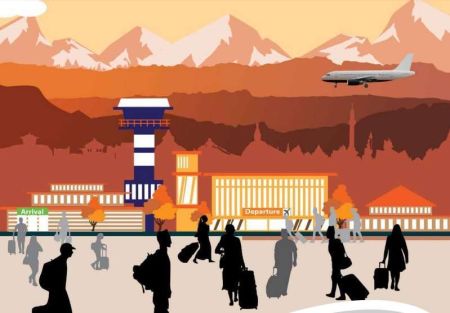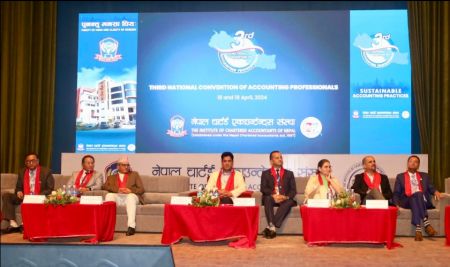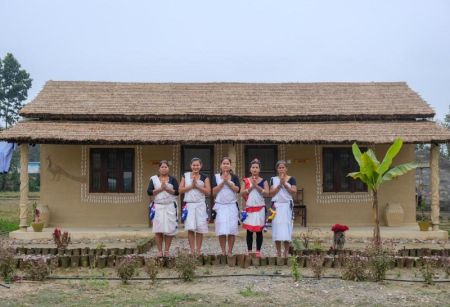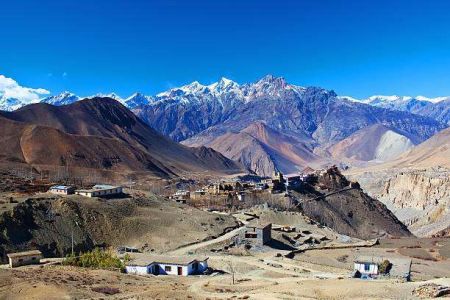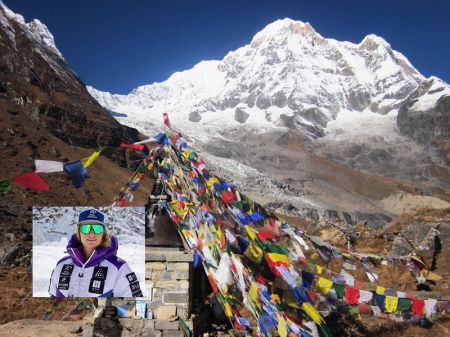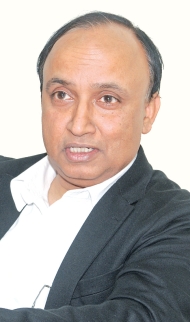 Shashank Srivastava
Shashank Srivastava
Executive Director
International Marketing and
Product Planning of Maruti
Suzuki India Ltd
Suzuki, the Japanese four-wheeler brand has topped Nepal’s car market since 1981. Through CG Motocorp, Suzuki has been regularly introducing a variety of passenger cars in all segments. The brand recently launched its 34th outlet in Nepal with the inauguration of a new showroom in the capital. New Business Age caught up with Shashank Srivastava, Executive Director, International Marketing and Product Planning of Maruti Suzuki India Ltd to talk about what Suzuki expects from the Nepali market, what the company is doing to ensure customer satisfaction and other issues. Extracts:
What brings you to Nepal?
We visit our distributors as part of our visiting schedule. Our brand believes that it is necessary to go to the field regularly to know the real situation of the market. There is a term in Japanese called 'Gemba' which is when a service provider interacts directly with the customer, at the exact site and then the value is created. This applies to the policy of Suzuki. So, this is one of the reasons for my visit to Nepal. Also, I have come here to attend the expansion of Suzuki’s showrooms which is defnitely an occasion to be celebrated.
We have been hearing that the market is tight due to the financial restrictions on auto loans. However, I have observed that the distributors are doing very well with the market being slightly disturbed.
What are your expectations from the Nepali automobile market?
The Nepali automobile market has grown tremendously over the last six years. 10,000 units of Suzuki four-wheelers were sold here in 2013-2014. Since then, the number has been going up for Suzuki with over 11,500 units in 2014-2015, 12,000 units in 2015-2016 and 24,000 units sold last year. We have been the first and best choice for Nepali customers over many years. This year too, we expect to top the list as we have introduced new models including Baleno and Vitera Brezza. We are also planning to introduce the compact segment of these two models soon. Though this year we have seen a drop in sales which is attributed to the tighter bank financing, we hope the market will recover soon turning even better than the past years.
What is the market share of Maruti Suzuki across various segments in Nepal? How do you evaluate the popularity of Vitara Brezza in Nepal in a relative short period since its market launch?
We have topped the list in the car market segment, so definitely we have been putting more effort into fulfilling our customers’ expectations. If you see broadly, there are three main sectors in the car market in Nepal. One is vans, which occupies eight percent of the market. Another is the utility vehicle (UV)segment, which is roughly about 52 percent, then is the passenger car segment. Maruti Suzuki has a very good market share in the van segment here with 80 percent. We have over 43 percent market share in the passenger car and in the UV category. We did not have products in this segment in the past. However, after the launch of Vitara Brezza, the market share went to 10 percent in this category. Now Suzuki's overall market share in Nepal is close to 35 percent. Suzuki is competing with other brands in each segment now. Hopefully, that will give us better results in the days to come.
We have found that both in India and Nepal, there are groups of customers who want larger and better featured vehicles within the compact segment. This requirement of customers is being served by the Baleno model. A large number of customers want UV vehicles from Suzuki. Vitara Brezza has fulfilled this need and therefore has also won the highest number of awards for any car ever in India. Brezza has won around 30 best car of the year awards since its launch. The Nepali market's response is also quite positive regarding demand for the four-wheeler. We rose from 0 per cent market share to almost 10 percent market share in the UV segment in a very short time after the introduction of the Brezza here.
Who are the target customers for Suzuki here?
Suzuki has whole range of cars for customers from all income levels including those who are buying four-wheelers for the first time to those who want to upgrade their older rides. If you look at the entry level cars that are basically targeted towards people buying cars for the first time, we have the Alto model for them. There are also options such as Suzuki Celerio, Swift and Baleno for customers who want to upgrade to a car with better features. For another segment that is vans, many customers use it for business purposes and some also for personal use. The UV vehicle such as Ertiga attracts the larger families. Suzuki has been successfully introducing new models according to the demand of the people and incorporating every type of customer which no other manufacturer has done to that range. Therefore, customers are satisfied with our products and this is the reason for Suzuki's success in Nepal.
What obstacles are in the way and what can be done to develop the auto market here? What views do you have on the proposed scrappage policy?
If you typically look at the market of Nepal, it has already developed to a large extent. Observing the experience in the Indian market on how it has developed throughout these years, I see similar conditions in Nepal as well. Presently, we are selling over 1.5 million cars annually in India and the market share is about 48 percent. We have grown tremendously in India over these years. When I joined Suzuki, the figure was 87,000 for the whole year. Having seen the changes in India in terms of volumes, systems, government policy and so forth, it is certain that the car market will be more attractive for Nepal in the future. The per capita income of Nepal is growing and therefore people are being able to afford cars. This has been the major factor to foster the growth of the automobile market.
Nonetheless, roads have to be improved in Nepal. There should also be automobile sector friendly policies in place. For example, 80 percent of the people in India and Nepal buy cars through financing. So, if you have better car financing facilities, the market will grow more. When talking about policy, there are also lots of rules which may turn a bit negative for the automobile market. For instance, in most countries, the governments have been specifying emissions standards like Euro 2, Euro 3 and Euro 4. Maruti Suzuki has been upgrading itself with time and all the cars need the Euro 4 norms which are prevalent worldwide. On the other side, regarding the issues like congestion of the roads and fuel consumption, Suzuki has been making special efforts.
In the case of Nepal, the government should mainly focus on smaller cars because they occupy less space and are fuel efficient. This has to be immediately done in Nepal as the roads here are congested. We are thankful to the government for its automobile friendly policies which have led to this much growth up to now. Furthermore, we are looking forward to cooperating and helping with more environment and auto friendly policies to bring about a healthy growth in the automobile market in Nepal.
The Scrappage policy may sound like a rational step, however, it is not as straight forward as mentioned. Generally speaking, one can think that it is great to have a scrappage policy to scrap old cars. Nevertheless, this is related to many other things like the infrastructure needed to scrap the cars and also, we should see if the people have the capacity to continually buy new cars. The gut may say this is good but it is related to many factors of the economy. In India, we are still learning and examining as to what kind of scrappage policy should exist.
Is Maruti Suzuki planning to launch new models here?
It is Maruti Suzuki's policy to endeavour to provide new vehicles in every market wherever it is required so that there is an element of excitement in the image of the manufacturer. If we look at the past, we have been launching many new vehicles including Suzuki Celerio, Baleno, Brezza, Ertigo, Desire and Ciaz. Soon, we will be introducing three more new models.
Besides this, Suzuki also believes that customer interaction and satisfaction has to be the major focus. In Nepal, customer satisfaction is growing every year. A few years back, around 88 percent of customers were happy with Suzuki whereas now the customer satisfaction rate has risen to 93 percent. The credit goes to our distributors who are having a healthy interaction with the customers and evaluating Suzuki frequently in terms of customer satisfaction. We try to ensure that our customers are more content with our products and service.





